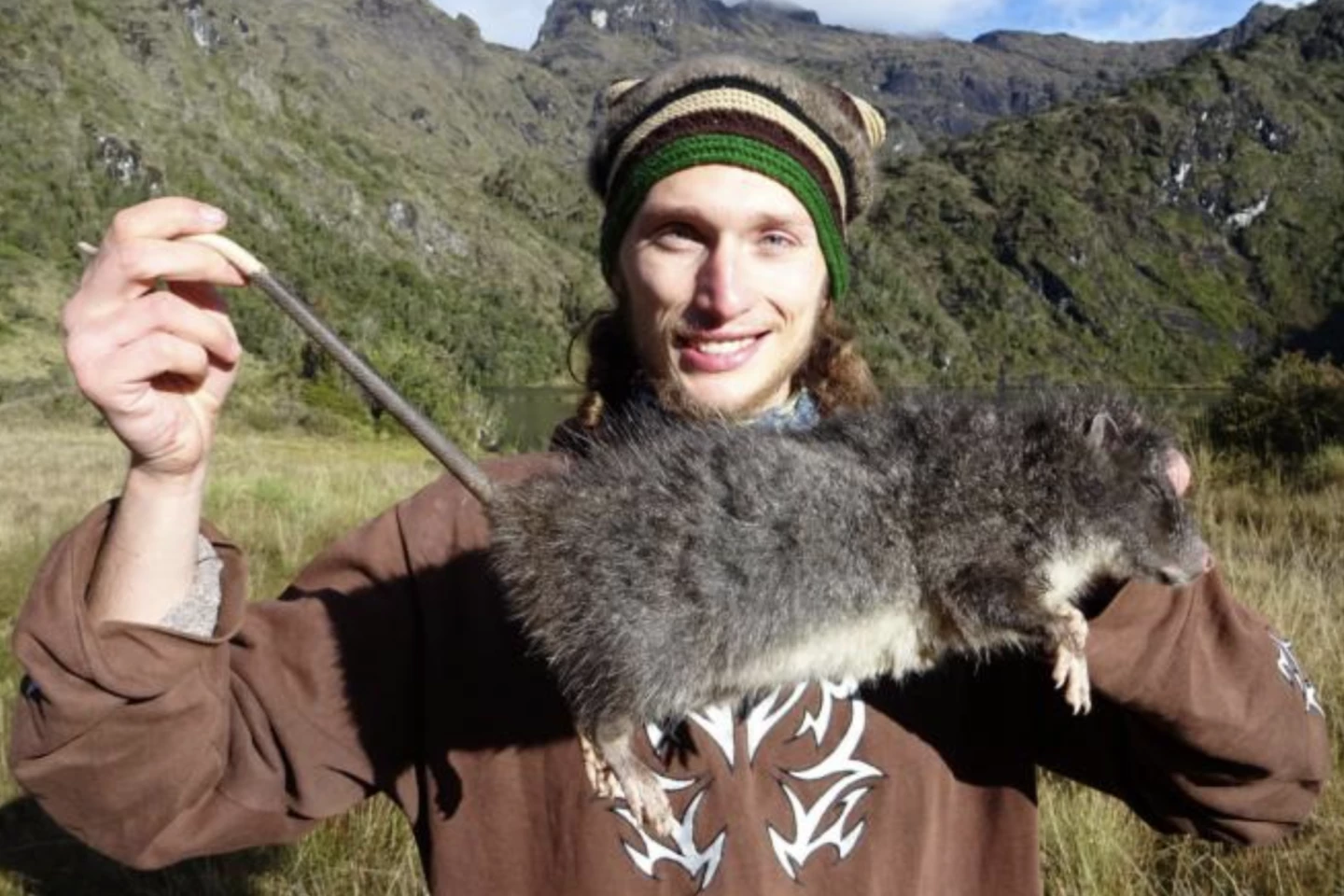An elusive nocturnal beast of a rodent that lives high in the mountains has been filmed and photographed for the first time, in a remarkable discovery for animal science and something akin to winning the zoology lottery.The animal has only been seen once in 30 years, and all descriptions of it stem from a handful of museum specimens.
Czech researcher František Vejmělka chanced upon his "golden ticket" during his six-month expedition in New Guinea's dense forested mountains in an effort to fill in the gaps of wildlife knowledge that plagues the region. Even among the most well known species such as tree kangaroos, there's a lot we don't know fully understand about native species that inhabit this remote terrain.
Known as the subalpine woolly rat (Mallomys istapantap), it's a far cry from the woolly mouse that scientists bred recently. Head to tail, the males observed measured a whopping 85 cm (almost 3 ft) and weighed up to 2 kg (4.5 lb). As to why they live in such a rugged alpine region higher than 3,200 meters (10,500 ft) above sea level, it most likely had to seek out resources in other areas due to competition – and perhaps not from other mice or rats, which they're most closely related to, because this big boy (and girl) only eats plants.
But with that migration to higher altitudes, the subalpine woolly rat would have needed adaptations that include better resilience to cold, like a thick furry coat and a larger body plan – often seen in bigger animals. And its nocturnal foraging habits mean better evasive skills against carnivorous predators, including the human kind.
Indeed, one such specimen that allowed Vejmělka to assess its parasites, diet and other morphological features (below) was a deceased individual that had been killed by a dog belonging to local hunters.

“It’s astonishing that such a large and striking animal has remained so poorly studied," said Vejmělka. "How much more is there to discover about the biodiversity of tropical mountains?”
Footage captured of the rat by camera traps set up on Mt Wilhelm has also allowed Vejmělka to fill in many of the gaps in our knowledge of this species, including how it moves, its foraging patterns and other aspects of its behavior. The scientist, who had help from local indigenous people over his six-month stay, documented and genetically identified 61 species of non-flying mammals – rodents and marsupials – on Papua New Guinea's highest peak.
"If it weren’t for the indigenous hunters who accompanied me in the mountains and helped me locate the animals, I would never have been able to collect this data,” he said.
The unique find is one of the largest murine rodents – the Old World group that includes the mice and rats we're more familiar with – on the planet and the biggest in the region. Fortunately, you won't be seeing infestations of these huge "spectacular mammals," as the scientist calls them, anytime soon. They prefer their solitary existence in the dark, spending their days in burrows or climbing up high to hide in tree canopies.
The research is vital in filling in the missing data for the Australasian tropics, an area understudied compared to the Americas, Africa and Southeast Asia.
The research was published in the journal Mammalia.







